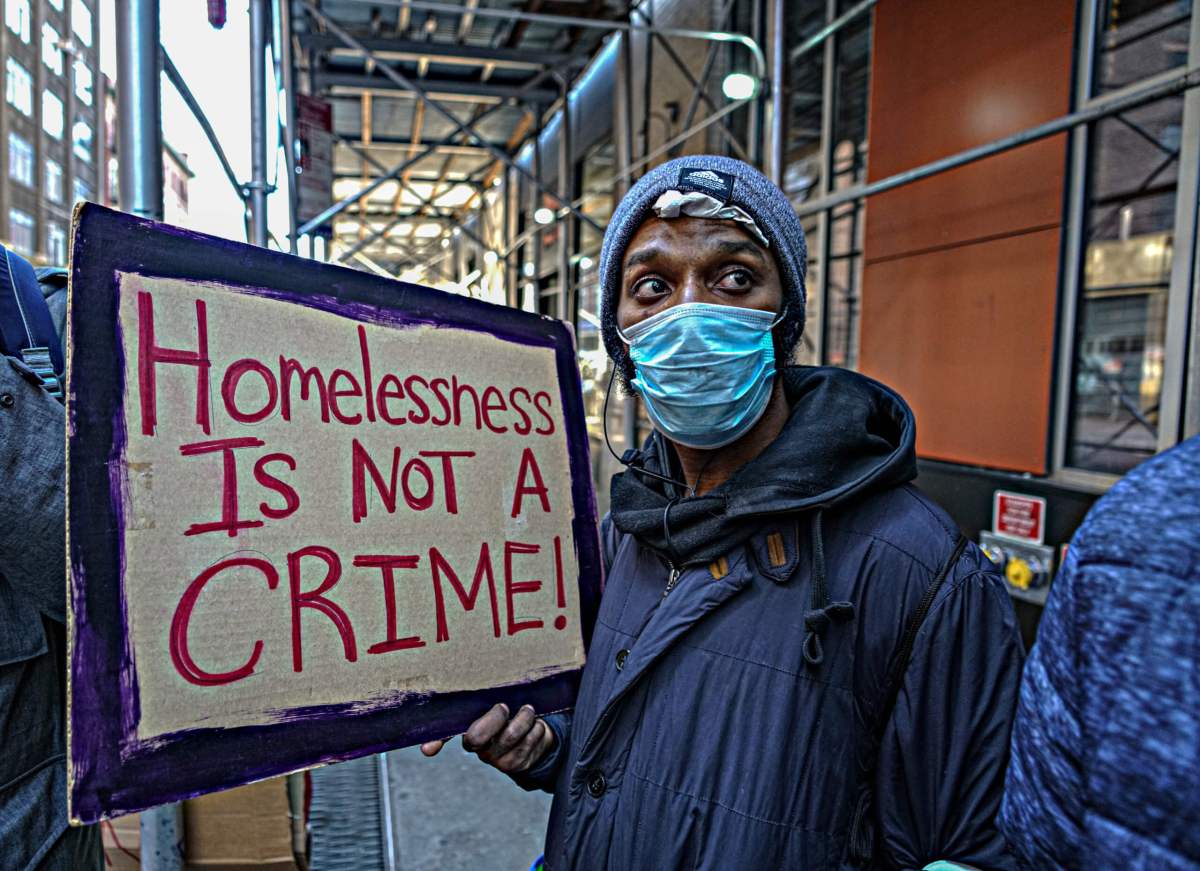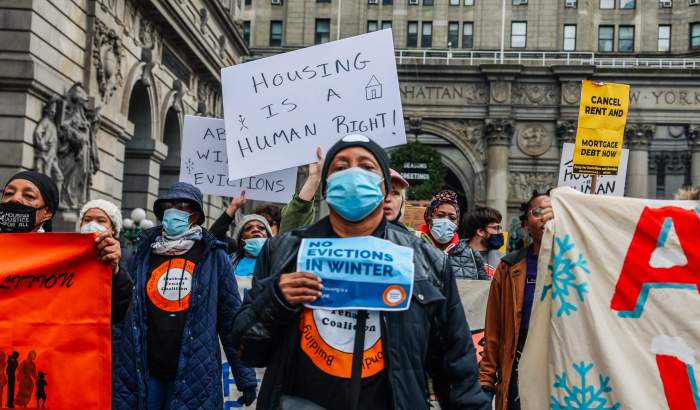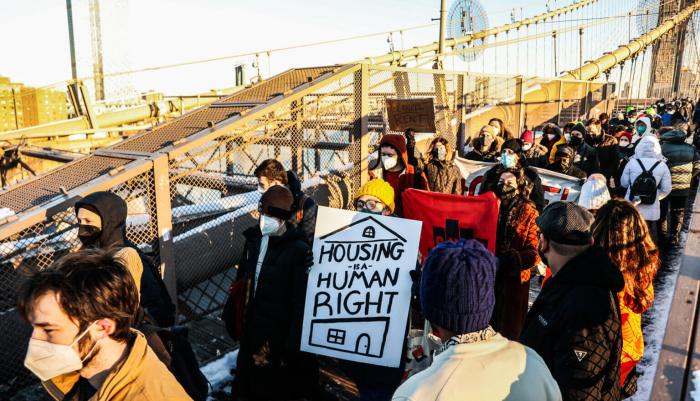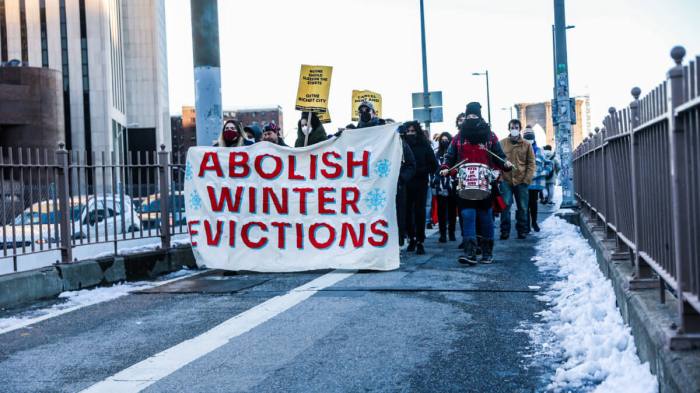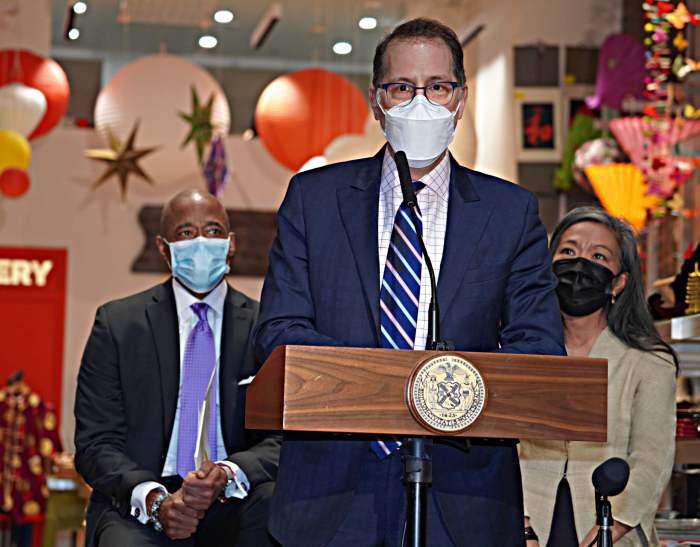With thousands of tenants at risk of homelessness as New York State’s eviction moratorium is set to expire on Jan. 15, legislators and housing advocates are rushing to extend the deadline in order to protect the most vulnerable.
One group in particular, the Citizens’ Committee for Children (CCC), conducted a report that indicated 41% of women living with children in NYC are unable or not working. This drastically contrasts with the 24% of men with children who are also not currently working.
The CCC believes this is a lingering effect of remote school learning due to the COVID-19 pandemic and the lack of safe, healthy and accessible childcare.
“As a result, women with children face higher risks of losing their homes once the moratorium lifts,” a CCC email statement said on Jan. 12. “Even prior to the pandemic, almost 70% of shelter residents were represented by women with children, most of whom are families of color.”
If the eviction moratorium does expire this weekend, this situation would be dire for women and children, but particularly women and children of color.
“If you look at the homeless census data you actually have seen kind of the benefit of an eviction moratorium,” said Jennifer March executive director of the CCC, in an interview with amNew York Metro Jan. 13. “We didn’t see an upsurge in the family shelter count. Historically the shelter population is typically made up of 70% families with children, right now it’s hovering around 50%.”
March explained that this data makes the Family Homelessness Coalition and the CCC concerned that if the moratorium does end this weekend, a massive surge will occur in shelters across the city as women and children will be forced from their homes, largely in part because of job loss due to inaccessible childcare.
“There are things that we and others in the advocacy community are talking about, like ‘What are the permanent fixes to housing insecurity?’ So there is a robust debate on statewide rental subsidies.” said March.
Statewide subsidies are payments commonly distributed to low-income families who don’t have access to childcare. The payment goes directly to childcare services so adult family members can work and hopefully increase their income. In addition to rental subsidies and assistance, advocates argue that New York needs to expand access for childcare.
“Our fear is that the moratorium worked in the sense that it gave people some stability, despite their inability to meet rent,” said March. “But now two things are going on, the eviction moratorium is ending and the Emergency Rental Assistance Program (ERAP)? We need more of it.”
ERAP was a NYS financial relief program that provided economic support to low-income families who were at risk of homelessness. On Wednesday, the Partnership for the Homeless – an organization that aims to solve homelessness – issued a statement echoing the same concerns of the CCC.
“Over the last two years, New York State’s eviction moratorium has been a lifeline to countless New Yorkers who have struggled to pay their rent,” said Áine Duggan, President and CEO of The Partnership for the Homeless. “That will all come to an end this weekend when the moratorium ends, and it could not be at a worse moment – in the dead of winter and as the coronavirus surges across our state.”
As the eviction moratorium expiration date looms closer, the CCC and Partnership for the Homeless continue to advocate for a permanent solution of homelessness, which they believe starts with prevention. Especially for one of the state’s most vulnerable populations.
“Prevention, which is the most humanitarian and cost-effective solution to homelessness, is key to stabilizing families, primarily women and children of color, who bear the brunt of homelessness and have endured immeasurable pain during the pandemic,” said Duggan.
Last updated 1/26/22 at 9:24 am



